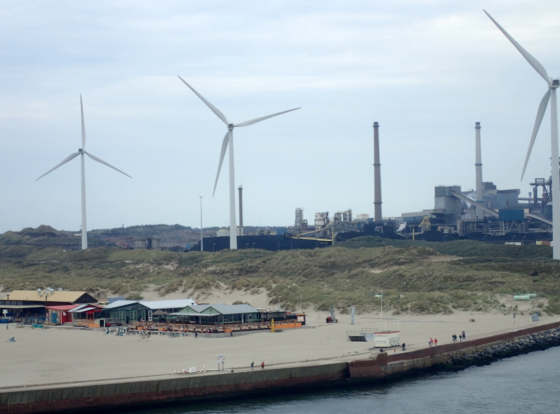Tata Steel emissions more polluting than thought, says new report


The Tata steelworks in IJmuiden is the main source of metal and polycarbon-based pollutants in the IJmond region, and figures collected by the regional health board show the pollution is more serious than the company’s own records would indicate, public health institute RIVM says in a new report.
The study is the third by the RIVM into pollution in the area and includes research into the origins of dust found on the ground.
This research, says the RIVM, shows the dust mainly originates from the Tata Steel plant due to coke production, the storage and shipment of coal and dust that had settled at the plant becoming airborne again.
Nevertheless, the existing research does not provide the full picture, the RIVM says, and local authorities need more accurate measurement data to identify the origin more precisely.
Tata Steel keeps records of its emissions and these should give an indication of what the impact on the local environment will be.
But the company’s own figures and those collected by the health board show wide differences. For example, actual lead and chrome-based pollution is at least five times higher than would have been expected.
The RIVM points out that figures for two Tata Steel suppliers at the plant – Harsco and Pelt & Hooykaas – are not included in the company’s environmental report, which could explain part of the discrepancy. Neither firm is required by law to detail its emissions.
Nor is it clear if all emissions due to ‘incidents’ are included.
Effective
Accurate measuring will enable officials to take the right measures at source and is a key factor in assessing if those measures are effective, the agency said.
Previous studies by the RIVM have concluded that the levels of PAHs and lead in dust were particularly impacting on children’s health and that family doctors in the region are dealing with more acute health problems.
The company has not yet commented on the new report but has pledged to speed up the transition from coal-fired blast furnaces to those powered by hydrogen.
Law
In September, MPs called for tougher environmental standards for the Tata steelworks, suggesting closing the most polluting operations and even mooting partial nationalisation.
In December, the government published a seven point plan to improve air quality around the plant, which means Tata Steel will have to meet tougher rules on pollution and will face extra checks to make sure it complies.
Three foundations, supported by several wealthy individuals, have also started their own investigation into the increased risk of cancer and other diseases in people living close to the Tata Steel works. A number of locals are also now taking legal action against Tata Steel for endangering human and animal health.
Thank you for donating to DutchNews.nl.
We could not provide the Dutch News service, and keep it free of charge, without the generous support of our readers. Your donations allow us to report on issues you tell us matter, and provide you with a summary of the most important Dutch news each day.
Make a donation